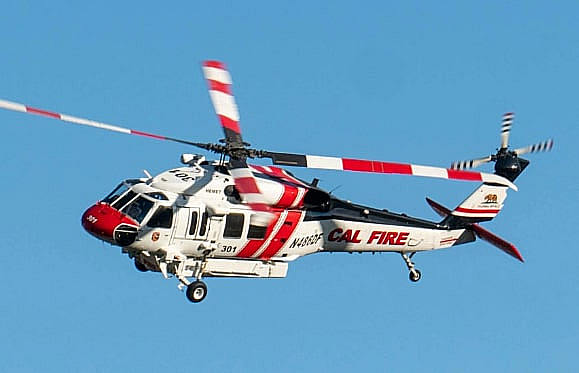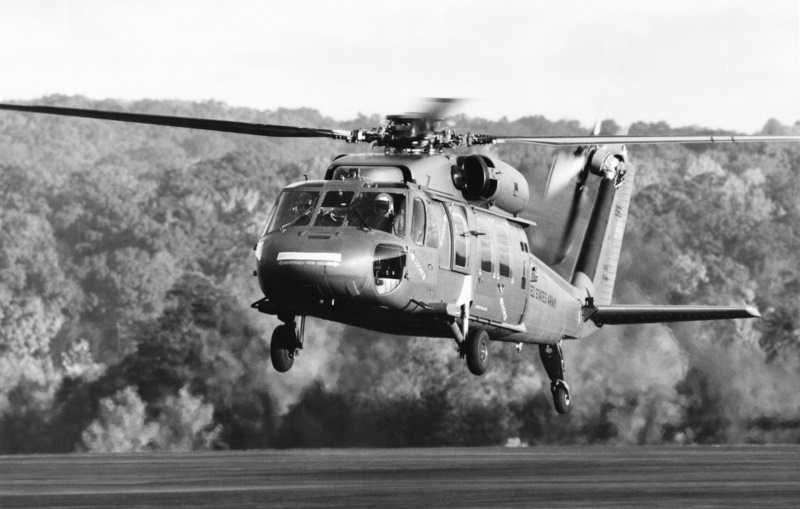Exploring the Capabilities of the Sikorsky S 70: A Thorough Evaluation
Rotary-Wing Airplane Offering Superior Longevity and Accuracy Engineering
In the world of air travel, rotary-wing aircraft have actually long been recognized for their unique capabilities in numerous operational atmospheres. From military objectives to noncombatant applications, the advancement of rotary-wing modern technology has paved the way for devices that provide unrivaled durability and precision design. With developments in materials and building strategies, coupled with innovative trip control systems, these aircraft have become important devices for jobs that require both robustness and accuracy. As we discover the elaborate balance between advancement and dependability in rotary-wing aircraft, it ends up being obvious that the convergence of innovative technology and tested design principles has established a brand-new requirement for efficiency and performance in the aerospace market.
Advancement of Rotary-Wing Modern Technology
Throughout the background of air travel, the advancement of rotary-wing technology has been a testament to consistent innovation and innovation in aerial design. From the early days of vertical trip with rudimentary styles to the advanced helicopters and various other rotary-wing aircraft these days, the development in this field has actually been amazing.
In the early 1900s, leaders like Igor Sikorsky and Juan de la Cierva made substantial strides in rotary-wing modern technology. Sikorsky's VS-300 helicopter, first flown in 1939, noted a turning point in the advancement of practical rotary-wing airplane. This success led the way for additional advancements in vertical flight capacities.

Today, rotary-wing aircraft play important duties in numerous markets, including armed forces operations, emergency situation clinical services, legislation enforcement, and industrial transportation. The development of rotary-wing modern technology continues to push the limits of what is feasible in upright trip, making sure that these aircraft stay crucial possessions in the air travel industry.
Materials and Building And Construction Innovations
Showing a fusion of cutting-edge products and exact construction methods, rotary-wing airplane have undergone significant improvements in sturdiness and performance. One of the vital advancements in materials used for rotary-wing airplane is the increasing use of composite products.
In addition, the integration of sophisticated layers and surface area therapies has actually played a vital duty in boosting the longevity of rotary-wing airplane. These coatings offer defense against rust, abrasion, and extreme weather, expanding the life expectancy of the aircraft and decreasing maintenance requirements.
In terms of construction technologies, additive manufacturing, likewise called 3D printing, has actually reinvented the production of complex parts for rotary-wing aircraft. This modern technology enables quick prototyping and modification, resulting in faster development cycles and reduced expenses. Overall, the constant advancement of materials and building techniques is driving the capacities and efficiency of rotary-wing aircraft to new heights.
Accuracy Flight Control Solution

The assimilation of GPS technology further improves the precision and integrity of these systems, enabling accurate navigating, waypoint tracking, and automated flight control. sikorsky s 70. This level of precision not only enhances the security of rotary-wing procedures however additionally boosts general operational effectiveness and objective effectiveness
In addition, the continuous improvements in fabricated knowledge and artificial intelligence have helped with the development of self-governing trip capabilities within Accuracy Trip Control Equipment. This enables rotary-wing airplane to carry out complex goals with unparalleled precision and uniformity, making them essential assets in a large variety of applications, including army procedures, search and rescue objectives, and airborne photography.
Toughness in Testing Settings
Sought after functional settings, rotary-wing airplane demonstrate outstanding strength and toughness, making sure optimal performance under challenging environmental conditions. These airplanes are developed to hold up against a large range my blog of environmental aspects, consisting of extreme temperature levels, high winds, and harsh surface, making them well-suited for different missions in varied landscapes.
One vital variable adding to the durability of rotary-wing aircraft is their rugged building. These airplanes are built using top notch materials and progressed engineering strategies to improve their architectural stability and dependability. Furthermore, elements such as rotor blades, engine systems, and landing equipment are carefully made to withstand the pressures and stress and anxieties run into during operations in tough atmospheres.
Moreover, rotary-wing airplane are furnished with innovative onboard systems that keep an eye on performance metrics in real-time, permitting aggressive upkeep and very early detection of possible concerns - sikorsky s 70. This positive approach helps avoid unexpected failings and guarantees the ongoing airworthiness of the aircraft in demanding functional settings. Generally, the resilience of rotary-wing airplane in tough settings is a testimony to their remarkable engineering and style, making them indispensable properties for various mission-critical procedures
Maintenance and Dependability Standards
The adherence to rigid upkeep and reliability criteria is vital in making sure the optimum efficiency and security of rotary-wing airplane. Normal upkeep checks, conducted by qualified specialists, are vital to recognize and resolve any prospective concerns prior to they jeopardize the aircraft's functionality. These checks include a thorough exam of all critical elements, consisting of the engine, rotor system, avionics, and hydraulic systems, to guarantee that they remain in prime working problem.
Moreover, adherence to arranged upkeep periods based on manufacturer standards is important for upholding the aircraft's reliability. This positive strategy assists avoid unforeseen break downs and makes sure that the airplane continues to be airworthy for its desired goals. Additionally, the execution of robust dependability requirements, such as regular part testing and substitute based upon established lifecycles, better enhances the airplane's dependability.
Verdict

Finally, the developments in rotary-wing airplane modern technology have brought about superior resilience and accuracy design. With innovative materials and building and construction methods, along with precision trip control systems, these airplane can run in difficult atmospheres with increased integrity. The maintenance and integrity standards guarantee that these rotary-wing aircraft remain to do at their best, making them necessary assets for different markets.
Showing a fusion of innovative products a knockout post and specific building and construction techniques, rotary-wing airplane have undertaken significant innovations in resilience and performance. One of the key developments in materials utilized for rotary-wing airplane is the increasing usage of composite materials.With precise focus to information and advanced technical assimilation, rotary-wing aircraft have actually accepted Precision Trip Control Solution as a cornerstone of their operational quality. In general, the durability of rotary-wing aircraft in difficult environments is a testament to their exceptional engineering and layout, making them essential possessions for different mission-critical operations.
In final thought, the advancements her explanation in rotary-wing aircraft innovation have actually led to remarkable sturdiness and accuracy design.